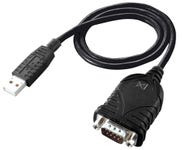Audio/Video Cables and Connectivity
MSS Data Solutions has the answers to your problems with audio and video communication. Our selection of high-quality cables and adapters guarantees crystal-clear video and audio in all of your installations. MSS Data Solutions is pleased to provide a wide variety of options suitable for both business and leisure use. Our user-friendly service makes locating the best cables a breeze. Buy Audio/Video Cables and Connectivity online in Australia from MSS Data Solutions. MSS Data Solutions guarantees high-quality audio and video to enhance your viewing and listening experiences. Browse our selection right now!
-
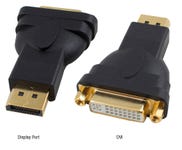 Adaptor DisplayPort M-DVI FItem Number: HADDPMDVIFPackaging Unit: 1 / eachLoading price...
Adaptor DisplayPort M-DVI FItem Number: HADDPMDVIFPackaging Unit: 1 / eachLoading price... $25.27
$25.27 -
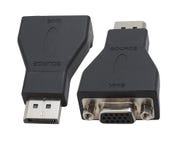 Adaptor DisplayPort M-VGA FItem Number: HADDPMVGAFPackaging Unit: 1 / eachLoading price...
Adaptor DisplayPort M-VGA FItem Number: HADDPMVGAFPackaging Unit: 1 / eachLoading price... $43.70
$43.70 -
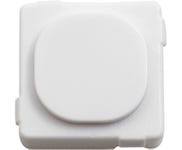 Audio Visual Blank Insert WhiteItem Number: HWPC-BKINSPackaging Unit: 1 / eachLoading price...
Audio Visual Blank Insert WhiteItem Number: HWPC-BKINSPackaging Unit: 1 / eachLoading price... $0.78
$0.78 -
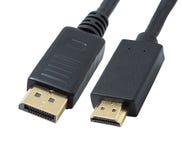 Cable Active DisplayPort to HDMI 1.8mItem Number: HMDPAHDMI1.8Packaging Unit: 1 / eachLoading price...
Cable Active DisplayPort to HDMI 1.8mItem Number: HMDPAHDMI1.8Packaging Unit: 1 / eachLoading price... $32.21
$32.21 -
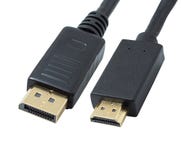 Cable Active DisplayPort to HDMI 1.8mItem Number: MDPAHDMI1.8Packaging Unit: 1 / eachLoading price...
Cable Active DisplayPort to HDMI 1.8mItem Number: MDPAHDMI1.8Packaging Unit: 1 / eachLoading price... $8.84
$8.84 -
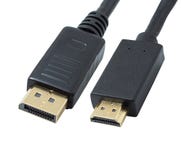 Cable Active DisplayPort to HDMI 1MItem Number: HMDPAHDMI1Packaging Unit: 1 / eachLoading price...
Cable Active DisplayPort to HDMI 1MItem Number: HMDPAHDMI1Packaging Unit: 1 / eachLoading price... $26.51
$26.51 -
 Cable Active DisplayPort-DVI-D 1.8mItem Number: HMDPADVI-D1.8Packaging Unit: 1 / eachLoading price...
Cable Active DisplayPort-DVI-D 1.8mItem Number: HMDPADVI-D1.8Packaging Unit: 1 / eachLoading price... $36.10
$36.10 -
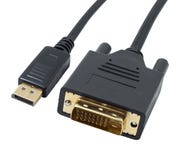 Cable Active DisplayPort-DVI-D 1mItem Number: HMDPADVI-D1Packaging Unit: 1 / eachLoading price...
Cable Active DisplayPort-DVI-D 1mItem Number: HMDPADVI-D1Packaging Unit: 1 / eachLoading price... $29.81
$29.81 -
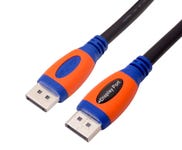 Cable DisplayPort Moulded M-M 1mItem Number: HMDPMM1Packaging Unit: 1 / eachLoading price...
Cable DisplayPort Moulded M-M 1mItem Number: HMDPMM1Packaging Unit: 1 / eachLoading price... $13.11
$13.11 -
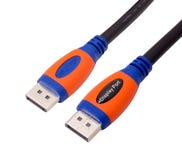 Cable DisplayPort Moulded M-M 2mItem Number: HMDPMM2Packaging Unit: 1 / eachLoading price...
Cable DisplayPort Moulded M-M 2mItem Number: HMDPMM2Packaging Unit: 1 / eachLoading price... $13.97
$13.97 -
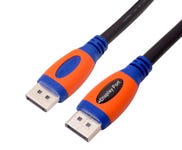 Cable DisplayPort Moulded M-M 2mItem Number: MDPMM2Packaging Unit: 1 / eachLoading price...
Cable DisplayPort Moulded M-M 2mItem Number: MDPMM2Packaging Unit: 1 / eachLoading price... $32.74
$32.74
Buy our Huge Range of AV cable Online
What is an AV cable?
An AV cable or Audio-Video cable is a special cable that transmits audio and video signals between electronic devices. These cables connect devices such as DVD players, VCRs, gaming consoles, camcorders, and other audio/video equipment to television or monitor.
Types of AV cable
You will find various types of AV cables on our website, MSS Data Solutions, but in this section, we will discuss about the most common types of AV cable.
- Component Video Cable – These AV cables separate the video signal into three components. One is for luminance (brightness), and two are for chrominance (colour). It typically uses three RCA connectors (red, green, and blue) for video and additional cables for audio.
- Composite Video Cable - This cable combines video and audio signals into a single cable. A yellow RCA connector usually carries the video signal, while red and white RCA connectors carry the audio signals.
- HDMI (High-Definition Multimedia Interface) – HDMI is the widely used digital AV interface that can carry high-definition video and audio signals. It supports video and audio in a single cable, providing a high-quality and convenient connection.
- S-Video Cable - The S-Video cable separates the video signal into two different components (brightness and colour) for improved video quality compared to composite video cable.
- VGA (Video Graphics Array) Cable - While primarily used for computer monitors, VGA cables can transmit video signals and, in some cases, carry audio as well. These AV cables use a 15-pin connector.
Use of AV cable
The primary benefits of AV cables are:
- Connecting DVD/Blu-ray Players to TVs - AV cables are often used to connect DVD or Blu-ray players to televisions. Since AV cables transmit audio and video signals, one can watch movies on TV with synchronized sound.
- Gaming Consoles - Video game consoles, like PlayStation, Xbox, or Nintendo Switch, often use AV cables to connect to a TV or monitor.
- Camcorder Connections - AV cables allow you to connect camcorders to TV to view recorded videos on a larger screen.
- Projector Connections - AV cables connect audio and video sources to projectors, enabling large-screen displays in home theatres, classrooms, or conference rooms.
- Audio/Video Receivers – Audio-Video cables are crucial in home theatre systems, connecting audio/video receivers to various source components like Blu-ray players, gaming consoles, or cable/satellite boxes.
Functions of AV cable
The main functions of AV cables are:
- Audio Transmission - AV cables transmit audio signals from one device to another using RCA connectors, with different connectors designated for left and right audio channels.
- Video Transmission – AV cables transmit video signals, enabling the display of visual content on a screen or monitor.
- Combining Audio and Video Signals - In many cases, AV cables combine audio and video signals into a single cable, simplifying the connection between devices and reducing cable clutter.
- Interconnecting Home Theater Components - AV cables play a crucial role in home theatre systems, interconnecting components like audio/video receivers, Blu-ray players, gaming consoles, and other devices to create a cohesive & synchronized multimedia experience.
- Facilitates Analog Connections - In cases where digital connections are not available or necessary, AV cables facilitate analog connections, transmitting analog audio and video signals.
How do AV cables work
Generally, the way AV cables work depends on the specific type of cable and the signals they are designed to transmit. However, this section will give a general overview of how different types of AV cables work.
Analog Audio Transmission (RCA Cables)
- Signal Generation: In analog audio transmission, such as using RCA cables with red and white connectors, the audio source device generates electrical signals representing audio waveforms.
- Connection: The generated analog audio signals are sent through the corresponding channels of the RCA cables.
- Reception: The receiving device, typically an audio amplifier or another audio source, interprets the analog signals and converts them back into audible sound.
Component Video Cables
- Separation of Signals: Component video cables transmit video signals by separating them into luminance (Y) and two chrominance (Pb and Pr) components.
- Connection: Each component is sent to the display device through its respective RCA connector (red, green, and blue).
- Reception: The display device interprets and combines these signals to reproduce the full-colour video content.
HDMI Cables
- Digital Transmission: HDMI cables transmit digital audio and video signals.
- Connection: The HDMI cable carries audio and video input signals from the source device to the display device.
- Reception: The receiving device interprets the digital signals, and the audio and video content is reproduced with high quality.
AV Cable Buying Guide
To properly buy AV cable online, consider the factors given below:
- Cable Length - Choose an appropriate cable length for your setup. However, remember that longer cables can lead to signal degradation, especially for analog signals.
- Cable type: Determine whether you need HDMI cables, RCA cables, S-video cables, or component cables. Selecting the correct AV cable type is essential to get the best result.
- Compatibility - Ensure that the cables are compatible with your devices. For example, if you have a 4K TV, ensure the HDMI cables support 4K resolution.
- Bi-Directional Cables - Some cables are labelled "bi-directional," meaning they can transmit signals in both directions. So, before purchasing, check whether you require a bi-directional cable for your setup or not.
Buy AV cable Online in Australia on MSS Data Solutions
You can easily set up a large-scale audio-video system if you buy AV cables online in bulk from our website, MSS Data Solutions. We deliver all products across Australia, so wherever you are in Australia, you will get AV cables without any delay.
Moreover, If you buy AV cables online from MSS Data Solutions, you will get various kinds of AV cables to choose from, including HDMI cables, RCA cables, component cables, S-video cables, etc. All AV cables on our website undergo rigorous testing to meet the highest standards.
Your ordered quantity for this item is more than what we have in stock.
Stock Availability
| Location | |
|---|---|
Please contact us to know more about this item's availability or possible restock dates.
